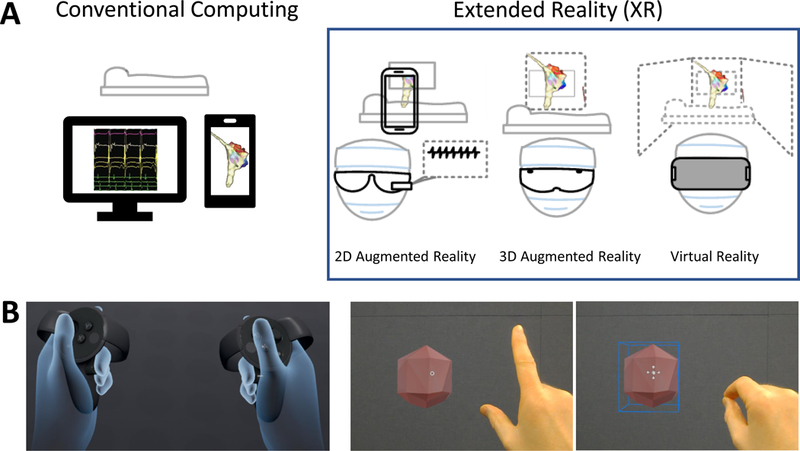Figure 1.

Extended reality devices and interfaces. A. Conventional computing (left) displays images on a 2D screen with a clear separation between physical and digital realities. User interaction with conventional computing devices generally requires keyboard and mouse or touch screen. Extended reality devices (right) mix digital and physical realities. 2D augmented reality (AR) devices may be head-mounted or displayed on a phone or tablet screen by using a camera to display physical reality. 3D AR devices incorporate spatial mapping to display 3D objects in the user’s physical space. Virtual reality (VR) devices occlude the user’s vision but may incorporate views of the user’s surroundings. B. Extended reality interfaces. VR controllers (left) use optical tracking and button proximity sensors to display the user’s hand position and posture accurately in the VR headset. Gaze and gesture interfaces (right) enable users to select 3D objects by targeting them with a visual cursor (the white ring) and performing a pinch gesture to interact with the object.
